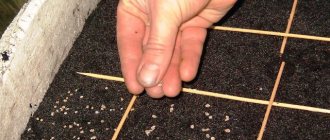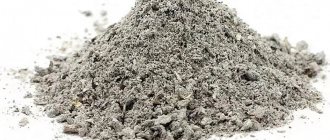- 5.1 Root feeding
Experienced gardeners, growing tomatoes on their plots, receive a rich harvest. They understand all the intricacies of plant care. But beginners have many problems related to proper watering and creating optimal conditions for planting. Beginning gardeners are no less concerned about what fertilizers can be used and at what time.
For full growth and fruiting, tomatoes require different fertilizers containing a certain set of microelements. At each stage of cultivation, the plants have different needs. Today we’ll talk about why you need to fertilize tomatoes with urea, how to properly dilute and apply this fertilizer. Who doesn’t want to see a tomato harvest like the one in the photo in their garden!
What microelements do tomatoes need?
Most of all, tomatoes need phosphorus, potassium and nitrogen.
Each of them does its own “job”:
- phosphorus is responsible for the resistance of plants to unfavorable conditions and strengthens the immunity of tomatoes;
- potassium is necessary for the plant especially during the fruiting period, its presence improves the taste of the fruit and reduces rotting;
- the presence of nitrogen in the right amount promotes the growth and development of plants and is responsible for productivity.
The deficiency of a particular mineral can be recognized by the appearance of the plants. For example, a lack of nitrogen leads to yellowing and falling of the lower leaves.
There are several options for nitrogen-containing fertilizers, the percentage of nitrogen in them is different:
- in sodium or calcium nitrate about 17.5%;
- in ammonium, ammonia fertilizers approximately 21%;
- in urea and ammonium nitrate no less than 46%.
Important! Fertilizers for tomatoes should be used for their intended purpose, strictly according to the instructions.
How to use fertilizer
Some novice gardeners do not know how to feed tomatoes with urea correctly. Do not scatter granules over the surface of the soil or add them to the hole when planting. In the first case, the fertilizer will be useless, since the ammonium will simply evaporate.
And in the second, nitrogen will burn the roots of the seedlings. Therefore, there are certain rules for adding urea. It is usually used for root and foliar feeding and spraying of green mass.
Planting seeds in a substrate with urea
It is useful to fertilize the soil with urea before planting seeds. It is not recommended to pour granules directly into the hole. You need to mix them with the soil. It is watered beforehand so that the urea dissolves better. For 1 m2 of substrate, 1-2 g of fertilizer is sufficient. An excess of nitrogen can interfere with seed germination and damage young shoots.
Watering tomatoes
To water tomato bushes, use a solution prepared according to the instructions. Each bush will require 1 liter, it is poured under the root. In this case, you need to make sure that the solution does not get on the leaves. To eliminate the risk of burns, it is better to fertilize in the evening.
Foliar sprays
To increase the volume of green mass of the plant, foliar spraying is used. Most often, urea is diluted for this purpose in a lower concentration: 1 tablespoon per 10 liters. This solution will not cause burns, but will make the leaves greener and larger.
Important rules for feeding tomatoes with urea
Urea is a chemical substance that, if overdosed, can cause harm to plants. If you don’t know how to dilute urea for feeding tomatoes correctly, when and in what quantity to add the solution, you can achieve the opposite results. Fruiting and immunity of the plant will decrease, it may get sick or not bear fruit at all.
Therefore, when using urea, several rules must be followed:
- dilute the fertilizer strictly according to the instructions;
- do not apply more than recommended;
- water the tomatoes in the evening;
- fertilize not often - 2-4 times per season;
- Monitor the plants carefully; if signs of nitrogen overdose appear, stop feeding.
What is urea
Feeding tomatoes with fertilizers is a completely natural procedure. Plants need to be fertilized at all stages, from seeds to soil treatment. Urea as a fertilizer feeds tomatoes with nitrogen. This fertilizer also has another name - urea. Release form: white granules. Soil bacteria process nitrogen, converting it into ammonium carbonate, which partially evaporates. Before starting work, the soil must be moistened.
Comment! If urea is placed under the plant in dry form, then it is sprinkled with soil.
Advantages
- The granules are completely soluble in water.
- Soil and fruits do not accumulate nitrates if the fertilizer is applied in accordance with the recommendations.
Flaws
- During the preparation of the solution, due to the endothermic reaction, the temperature of the working solution decreases. Therefore, it is necessary to use warm water. Otherwise, the cold solution may cause stress to the tomatoes.
- In the case when the plant is in great need of nitrogen, more granules have to be added. To neutralize the possibility of burns, sodium sulfate must be added.
The main advantages of using urea for tomatoes:
Accelerates plant growth.
Urea for tomato seedlings makes plants strong.
Helps the plant become more resistant to diseases and pests.
Increases protein content in fruits.
With the correct dosage, it does not accumulate in fruits or soil.
It dissolves well in water.
Can be applied at any time during the season.
Urea for tomatoes
The role of urea in the development of tomatoes
Any fertilizer, including urea, participates in the growing season of tomatoes, strengthens the immune system, due to which the plants become strong and hardy. This fertilizer is especially important at the seedling stage, when plants need to build up green mass and a good root system.
With a lack of nitrogen, plants grow slower, their leaves may become deformed, yellowing and premature leaf fall may occur. And this negatively affects the formation of ovaries and fruits. Tomatoes are fed with urea at the seedling stage, but the fertilizer must be used carefully: it is better to underfeed than to overfeed the plants.
Important! When seedlings are planted in a permanent place, urea can be used in minute quantities, otherwise, instead of forming ovaries, the tomatoes will begin to intensively become overgrown with leaves and shoots.
When to use urea for tomatoes
Tomatoes are fertilized with urea several times a season. Nitrogen is needed by plants at different stages of development. The following signs indicate its deficiency:
- the leaves are small, pale, fall off quickly, and may turn yellow;
- shoots are thin, weak, have few branches;
- few buds are formed.
When such signs appear, you can feed the tomatoes with urea once again by spraying the plant with its solution. But it is better to avoid this by applying fertilizers in a timely manner. Nitrogen is especially needed at the stage of seedling development; it will help to gain green mass. Urea is added to the soil 2 weeks before planting.
Foliar feeding of tomatoes with urea after planting is carried out in early June, no earlier than 10-14 days later. Then you can apply fertilizer 1-3 more times, no earlier than after 2 weeks. Excess nitrogen is also harmful; the plant will direct all its energy to the green mass, and the harvest will be smaller.
Important! You cannot fertilize during flowering and ovary formation. This will slow down the appearance of fruits.
Breeding rules
We have already talked about the role of urea for feeding tomatoes. It remains to be seen how to properly breed it in order to achieve a positive effect of nitrogen on the development of plantings.
To dilute urea, you must first carefully study the recommendations.
Warning! Excessive amounts of urea can harm your plants.
Sometimes it can be difficult to determine the amount of fertilizer if you don't have a measuring spoon. We offer you a table that will help you accurately measure the most common fertilizers.
Advice! Before planting tomatoes, you can add dry urea (no more than 3 grams) to each hole and mix with the soil.
According to the recommendations, 25 grams of granulated urea per square of planting is sufficient for one square. They are bred in a 10-liter bucket. This solution is enough for 10 tomatoes. Water at the root.
Important! Urea can cause the soil to become acidic. To avoid this problem, it is necessary to deoxidize it with limestone.
How to prepare urea
Undiluted urea is added to the soil only 2 weeks before planting. For tomatoes, 19-23 g per 1 m2 is enough. But most often this fertilizer is applied in the form of a solution. Urea dissolves well, so it is more effective. But if its concentration is exceeded, the plant can burn, so it is important to know how to dilute urea to feed tomatoes.
Most often it is recommended to mix 25 g of urea with 10 liters of warm water. This amount is enough to water the roots of 10 bushes. Many summer residents make a solution by adding 1 tablespoon of fertilizer to a bucket of water, which is 10-15 g. This solution can also be used for foliar feeding or spraying of leaves. This concentration does not cause burns.
But you can also find other recommendations on how to dilute urea for feeding tomatoes. For spraying, make a more concentrated solution: 50 g per 10 liters of water. It needs to be added little by little, this amount is enough for 50 bushes. And on an industrial scale they dilute up to 200 g per 10 liters.
Attention! Urea is combined with potash fertilizers and some others. It should not be mixed with dolomite flour, lime, chalk, or superphosphate.
Application
Since urea is a chemical, you need to know the rules for working with it:
Rules for applying fertilizers
- Dilute strictly according to the instructions.
- Watering should be done in the evening.
- Watch how the plants have changed.
Root feeding
According to the rules, urea can be used no more than five times for root feeding if the soil on the site is poor.
The first time when seedlings are grown. Add 1 gram of fertilizer to the planting boxes, then sow the seeds. This feeding accelerates the germination and growth of tomatoes at the initial stage.
The second feeding is carried out when planting tomatoes in a permanent place. Since urea is a fertilizer that oxidizes the soil, superphosphate, bird droppings, and wood ash are added as a neutralizer. This feeding should be done a week after planting the seedlings.
Comment! As soon as flowers appear, the use of urea in the garden is stopped.
The third time urea is used as a fertilizer for tomatoes after another 3 weeks. This cannot be done before, otherwise the addition of nitrogen will lead to rapid growth of greenery. It is best to prepare a complex fertilizer: add 10 grams of urea to the mullein solution. You need to water after sunset to avoid accidentally burning the leaves.
The fourth feeding of tomatoes with urea should be carried out only when the inflorescences do not set and fall off. It would be ideal to dilute urea with microfertilizers for tomatoes.
The last time the plants are watered is at the roots, when the tomatoes begin to ripen. In 10 liters of water you need to dilute 2 or 3 grams of urea, potassium magnesium, potassium sulfate. After watering, the soil is sprinkled with wood ash.
Foliar feeding
Urea or carbamide is a nitrogen-containing fertilizer. Its use when growing tomatoes at different stages of plant development is really effective. Although you should not forget about caution. Even a weak solution, if it gets on young leaves, can cause a burn.
Urea can not only be added to the roots, but also foliar feeding. As you know, microelements are absorbed faster through leaves.
Important! For foliar feeding, a solution of low concentration is taken.
To a 10-liter bucket of water you need to add one large spoon of fertilizer.
Spraying tomatoes with urea has a good effect on the appearance of plants. They become greener and lush. But you should not be overzealous with urea at the fruiting stage, since at this time plants need phosphorus rather than nitrogen.
Use of urea in the garden:
When to fertilize roots
At the stage of nurturing seedlings, urea for feeding tomatoes plays an important role. Plants should develop a strong root system with well-formed green mass. A lack of nitrogen will negatively affect the development of tomatoes. How to correctly determine that a seedling needs feeding? The main symptom is slow growth, thin, weak stems. Another sign is yellowing of the leaves, their deformation and falling. Nitrogen starvation will also result in falling flower clusters. This, in turn, will negatively affect the formation of ovaries and fruits.
Important! Tomatoes love moderation. When using urea, a golden mean must be observed. Both a lack of nitrogen and an excess of it are harmful.
If there is an excess of nitrogen, there will be an excessive growth of the green mass of the bush to the detriment of the fruiting function. The bush will give a poor-quality harvest. Frequent use of urea in excess also leads to the appearance of fungal diseases of plants.
Fertilizing tomatoes with urea is carried out according to the generally accepted scheme:
- tomato seedlings need the first feeding after the appearance of 2-3 true leaves, provided that the seeds have been properly processed and the soil for planting them has been prepared correctly;
- The second feeding is needed 7–8 days after planting the tomatoes in a permanent place. It should be taken into account that fertilizing with urea immediately after transplanting seedlings into open ground harms the plants. The seedling's strength is spent on growing the leaf apparatus, and not on the formation of ovaries;
- The third fertilizing with urea is provided after 2–3 weeks, not earlier, since the introduction of nitrogen will provoke rapid growth of green mass to the detriment of fruiting. Agronomists advise carrying out complex fertilizing, for this purpose 1 tbsp. a spoonful of fertilizer must be diluted in a solution of manure infusion. It must be borne in mind that during the mass flowering of tomato plants, the use of urea in the garden should be stopped, since the growth of green mass will occur to the detriment of the setting of inflorescences;
- The fourth feeding will be needed depending on the situation if the flower clusters do not set or fall off. The effect will be achieved by adding microelements to the urea solution. Potassium permanganate can be added to the solution with urea;
- The last time you need to feed the tomatoes is at the beginning of ripening. Watering with a solution of urea, potassium sulfate, potassium magnesium in a proportion of 3 g per 10 liters of water will speed up the ripening of fruits. Water the bushes at the roots, sprinkle with ash.
Agrotechnical rules provide for the use of urea no more than 5 times per season in depleted soils in the garden plot. The last two feedings should be done as needed. Urea, as a fertilizer, oxidizes the soil. To neutralize, you can add wood ash, bird droppings, limestone, and superphosphate.
Attention! In order not to harm the plants, use fertilizer for tomatoes only in the morning or evening, to avoid sunburn of the leaves.
Observation will tell you about the plants’ needs for one or another element. Leaves turn yellow due to nitrogen deficiency, turn purple due to lack of phosphorus, and pale leaves with green veins indicate a lack of iron.
Fertilizing tomatoes with urea: timing
Urea for tomatoes is used in both dry and liquid form. You can apply it under the bush itself or spray the ground part of the plant.
Urea is added to the ground before planting the plant in a dosage of 3 grams per hole. Mix thoroughly with the soil so that the granules do not remain on the surface. It must be applied two to three days in advance so that the urea has time to decompose and does not damage the roots of the seedlings. To prevent soil acidification, you can add ash or lime.
Mistakes when using urea
Exceeding the dosage. May cause burns and nitrate accumulation.
Use of urea on acidic soils. The earth is becoming even more acidic.
Fertilize plants on dry soil. The soil must be moistened.
Leave dry on the soil surface. Because some of the nitrogen will evaporate as gas.
Feed constantly. Use urea no more than 2-3 times a season.
For foliar feeding, use the same dosage as for root feeding. The concentration should be lower.
Rules for diluting urea for watering seedlings
A tablespoon contains 10-15 g of urea, and a matchbox contains 13-15. 0.5% or 1% solutions are used. The amount of substance for the required proportion: for each liter, take 20 (for a 0.5% solution) or 10 times (for a 1% solution) less fertilizer than water. You should not neglect the information on the packaging, and if the dosage indicated there is different, then dilute it according to the instructions.
Urea dissolves quickly, so you can water it immediately after preparation. Warm water is used for preparation.
How to properly fertilize
The use of urea is quite common. Even though many people don't trust it, it is still used in industry. It was decided to feed the crops with urea in small quantities. The main norm for using the substance in the soil is about 20 g per 1 m2. Tomatoes should be watered in such a way that the recommended amount is distributed over a 10-liter bucket of water. Spraying means that no more than 30 grams of nitrogen element should be used per 10 liters of water. Fertilizing seedlings is done as follows: prepare the correct solution. It should consist of 20 grams of fertilizer per 5 liters of water. After this, 1 liter of the substance should be watered on each bush.
If you are concerned about spoiling the soil, you can use lime.
- The use of lime will remove the negative effects of nitrogen.
- It perfectly neutralizes the negative effects of urea on the soil. As a result, you will not only get a wonderful harvest, but also save soil for the next planting of tomatoes.
- It is believed that for every 2 kg of urea, about 1 kg of lime should be used.
- A third of this mixture should be introduced at the moment when the soil is being prepared.
- The last part can be left for the moment when the already planted tomatoes will be fed.
It is important to prepare the fertilizer mixture correctly
You can create a liquid solution. It consists in mixing 50 grams of urea and about 9 liters of water. This solution will be enough to feed about 20 m2 of garden. They can also be sprayed. It is important to remember that the more mixtures you use per 1m2, the worse you do for the plant. It is very important to observe all proportions so as not to harm yourself and the tomatoes. If you decide to feed already grown plants, then this amount of substance is enough for fifty tomato bushes.
Features of feeding tomatoes
Fertilizing tomatoes with urea is used in open ground, as well as when growing them in a greenhouse or greenhouse. In each case there are nuances of applying fertilizers.
In the greenhouse
Many gardeners believe that urea should not be used in a greenhouse . There may be an excess of nitrogen in the soil, which will negatively affect the quality of plants. If tomatoes are planted in a greenhouse or greenhouse for permanent cultivation there, this can really happen.
But if you know how to feed tomatoes in a greenhouse with urea correctly, negative consequences can be avoided. After all, urea is safer than ammonium nitrate or other nitrogen fertilizers, since it does not accumulate, but evaporates. You just need to reduce the concentration of fertilizer, apply it little by little and work it deep into the soil.
Carefully! The greenhouse must be well ventilated, because ammonia will be released, which is harmful to humans.
In the open ground
Urea is not a universal fertilizer, so it is not used constantly. It is usually recommended to apply urea solution while growing seedlings. Then, if necessary, several more times. But it is important to understand how to feed tomatoes with urea in open ground correctly. It is necessary to take into account the type of soil; it is advisable to mulch the root zone after watering. This will help avoid nitrogen losses.











